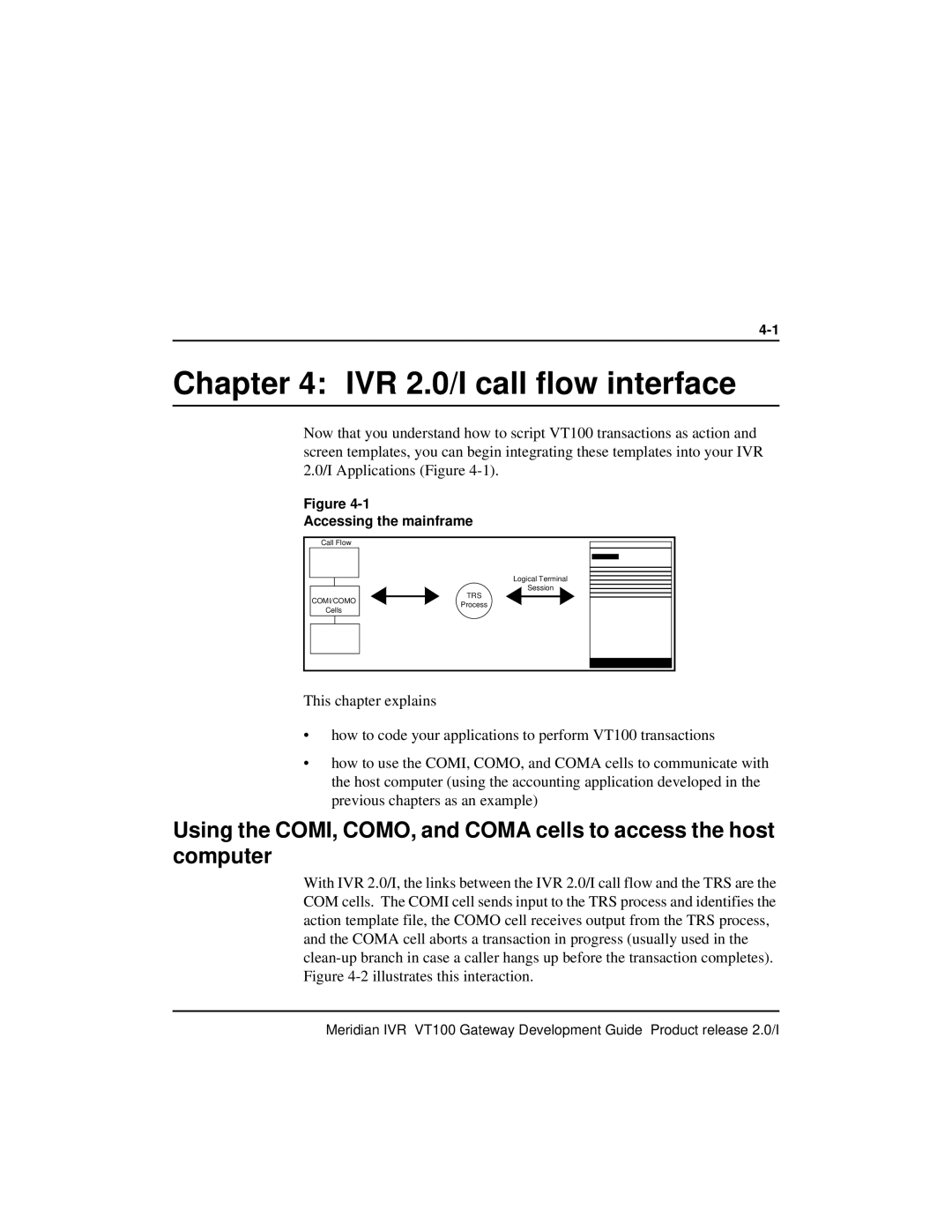
Chapter 4: IVR 2.0/I call flow interface
Now that you understand how to script VT100 transactions as action and screen templates, you can begin integrating these templates into your IVR 2.0/I Applications (Figure
Figure
Accessing the mainframe
Call Flow
COMI/COMO
Cells
Logical Terminal
Session
TRS
Process
This chapter explains
•how to code your applications to perform VT100 transactions
•how to use the COMI, COMO, and COMA cells to communicate with the host computer (using the accounting application developed in the previous chapters as an example)
Using the COMI, COMO, and COMA cells to access the host computer
With IVR 2.0/I, the links between the IVR 2.0/I call flow and the TRS are the COM cells. The COMI cell sends input to the TRS process and identifies the action template file, the COMO cell receives output from the TRS process, and the COMA cell aborts a transaction in progress (usually used in the
Meridian IVR VT100 Gateway Development Guide Product release 2.0/I
